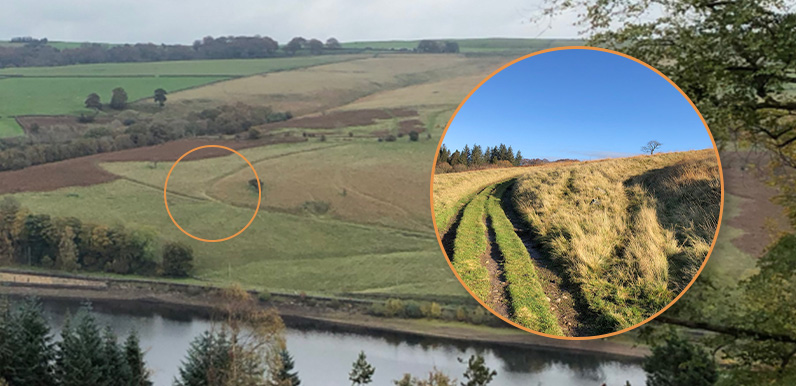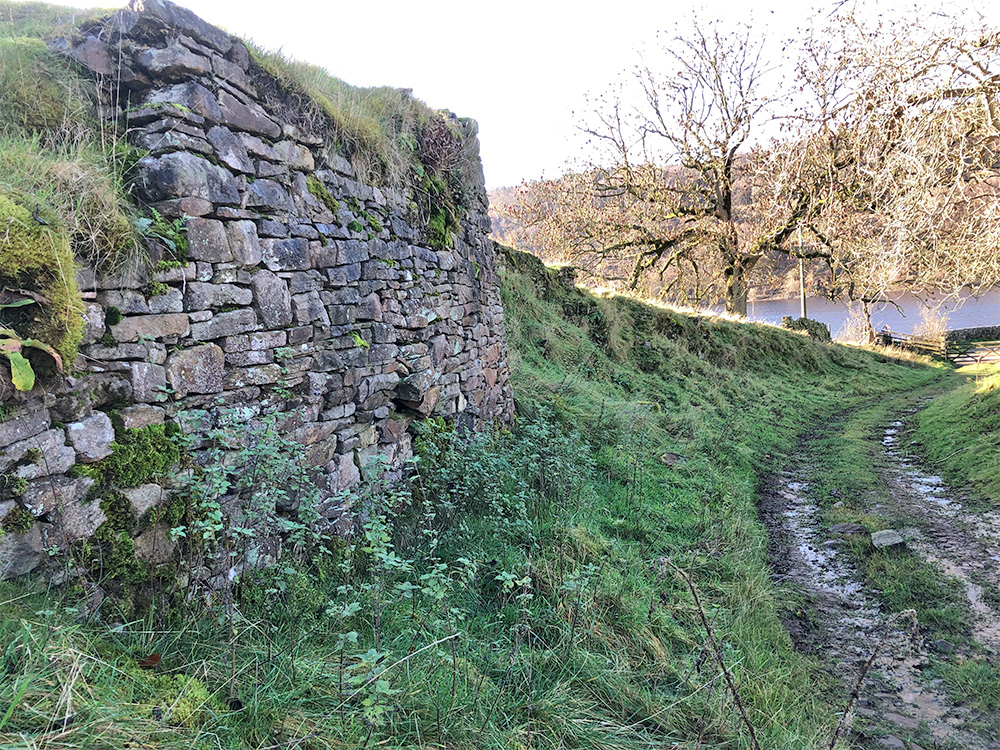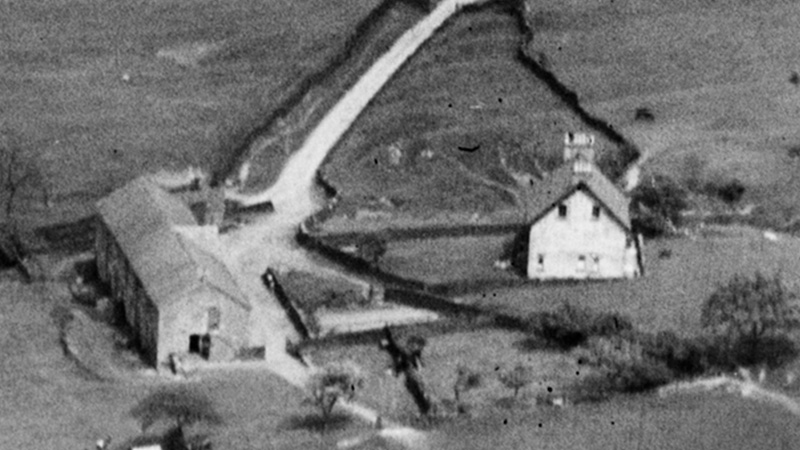Above: This view across the reservoir has only opened up since the felling of the fir trees. I’ve circled the junction of the twin tracks, with the ancient holloway running up the slope on the right.
The recent felling of the fir trees on the western slopes above Fernilee has opened up some wonderful views across the valley. I was curious about some tracks running up from the old Cromford & High Peak Railway line on the opposite side and decided to take a closer look.
They start from a gate beside the first stile down from the small car park at the head of the reservoir. It’s marked as a public footpath but it’s the first time I’ve ever explored it.
The first feature is a fairly tall wall of dressed stone beside the track (above). A look at the fade below reveals it formed the side of an embankment supporting a large barn at Shawstile Farm.
There’s very little evidence of the actual farm house left on the ground. It was demolished in the mid 1930s, along with Errwood Hall and over 20 other farm houses in the valley, following Stockport Corporation’s purchase of the land to build the twin reservoirs. (Click here for more on Shawstile.)
The old map on the fade shows the main track joining the Buxton to Whaley Bridge ‘Long Hill’ road. But the other track doesn’t feature at all.
It’s only when you get close to the tracks that the difference becomes apparent. The one to the north has stone footings, capable of taking fairly heavy traffic. The other is a u-shaped trench compacted into the moorland.
This must have been one of a series of ancient tracks that criss-crossed the land before the coming of the turnpikes, known as a holloway. The satellite view shows that they extended over the main road.
I find these historic routes fascinating, imagining the teams of packhorses that once transported all manner of goods to towns and villages spread across this fairly bleak landscape.




I agree with your emotions surrounding Holloway’s and this quotation by Mark Cocker is from his book ‘A Claxton Diary’, which includes references to Buxton”
“…the single track lane, known as a Holloway, may be thousands of years old and it was mesmerising to think how many people must have passed this same way. Gradually all the plodding feet and trampling hooves worked in concert with the rain to scour out an even deeper crease in the Earth. A glorious tunnel of vegetation. How creative the relationship can be between humans and the rest of nature. Particularly if we take things together one slow step at a time.”
Thanks, Mark, for raising Buxton’s profile through your love of the biodiversity of nature. A perfect way to celebrate our combined history as we journey through our landscape.